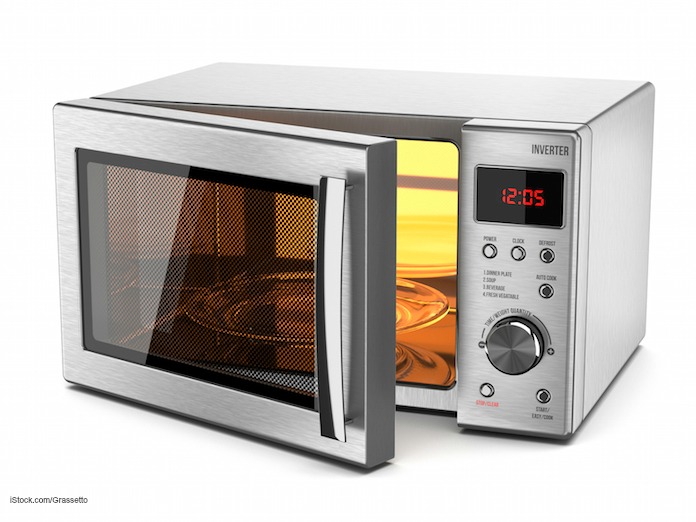The FDA and USDA are offering tips about using your microwave oven safely. That agency regulates microwave ovens. Consumers have experienced burns and other injuries from microwave radiation, especially if the ovens are not used or maintained properly.

There is another issue with microwave safety: food safety. Microwave ovens can “cook” food unevenly, leading to areas, especially in solid meats such as chicken, where the temperature is not raised high enough to kill pathogenic bacteria. In fact, some outbreaks in the past may have occurred because microwaves were used to cook the food in question, such as the Farm Rich E. coli outbreak. Mandatory label changes in 2008 omitted the microwave cooking instructions on many raw foods
The magnetron inside your microwave converts electricity into very short radio waves that vibrate at a high frequency. That power is absorbed by water, fats, and sugar in the food, which makes those molecules vibrate very quickly and generates heat. That’s why foods with a high moisture content cook best in the microwave oven.
Microwaves only go into food to a depth of about 1 to 1-1/2 inches. In thicker pieces of food, such as a large chicken breast, the inside cooks by conduction of heat from the outside to the center. Bones in meat can shield meat from microwaves too. This can result in uneven cooking.
Using a food thermometer in several different places in the food you are cooking in the microwave is critical to make sure it has reached a safe temperature to destroy pathogens. And always remove bones from any meat you cook in the microwave.
Microwaves do not carry the same risk to human health as x-rays or other kinds of ionizing radiation. Most of the injuries linked to microwave ovens are from heat-related burns. There have been very rare cases of radiation injury, from large amounts of radiation leaking through gaps in oven seals. But FDA regulations require that microwaves are designed to prevent these types of leaks.
Always follow manufacturer’s instructions for use. Don’t use most microwaves when they are empty, and don’t heat water or liquids longer than recommended. Always use microwave-safe containers and cookware. Metal pans and aluminum foil reflect microwaves, which can damage the oven.
Super heated water is another potential safety issue when using a microwave oven. “Super-heated” is water that is heated beyond its boiling point but doesn’t show the typical agitation of boiling water. Water heated in a clean cup beyond the boiling temperature can look still and as if it is not hot, but a slight disturbance or movement can make the water explode out of the cup. People have been seriously injured with burns because of super heating. To help prevent this, add ingredients such as instant coffee or sugar before heating.
The oven should be safe as long as door hinges, the latch, and seals are not damaged. Do not use an oven if the door doesn’t close firmly or is bent or warped. And don’t use ovens that operate when the door is open. There have been “increasing reports” about microwave ovens that appears to stay on and operate when the door is open. Immediately stop using this appliance if this happens.
If you are experiencing problems with your microwave, contact the oven manufacturer. Manufactures must tell the FDA about some issues, including defects, lack of compliance with federal standards, and accidental radiation occurrences. You can also report problems directly to the FDA by completing and mailing the Accidental Radiation Occurrence Report form.




